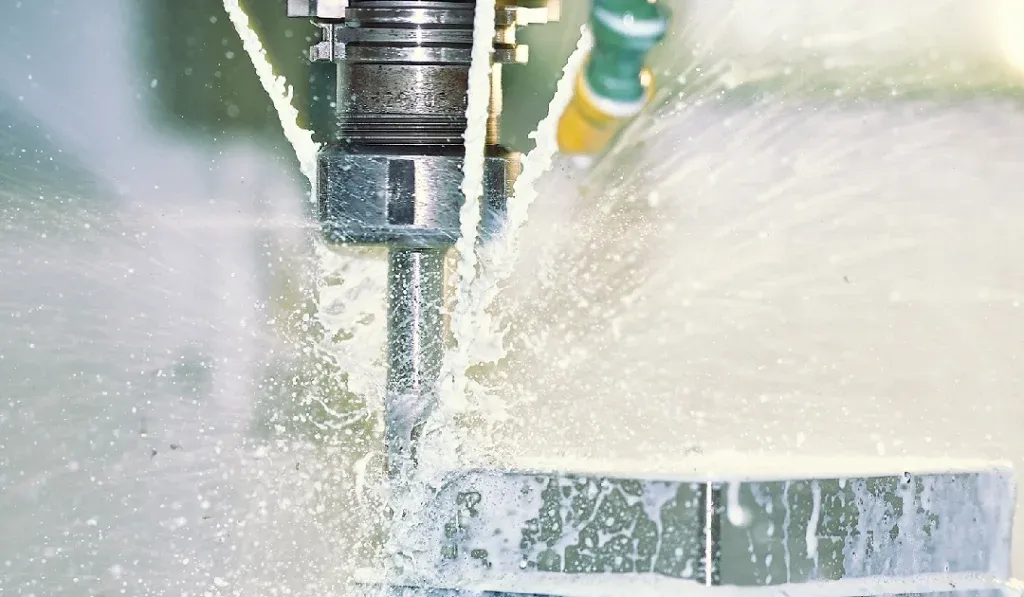Prologue:
Modern machining operations depend heavily on water-soluble metal cutting fluids because they provide efficient cooling, lubrication, and corrosion protection. These fluids, which are often referred to as water-miscible or emulsifiable cutting fluids, are created with particular ingredients to improve their functionality and performance. The essential elements and formulations of water-soluble metal cutting fluids will be discussed in this blog. The ability of these fluids to enhance machining performance, increase tool life, and guarantee the integrity of the workpiece will be better understood once the composition of these fluids is known. Manufacturers and machinists can choose the best fluid for their unique machining applications by thoroughly researching the essential elements and formulations of water-soluble metal cutting fluids.
Understanding the Components and Formulations
Water-soluble metal cutting fluids, also known as water-miscible or emulsifiable cutting fluids, are widely used in machining operations for their effective cooling and lubricating properties. These fluids consist of various components and formulations that work together to enhance machining performance. Let’s explore the key components and formulations of water-soluble metal cutting fluids.
Components:
A water-soluble metal cutting fluid is made up of various elements or compounds, which are collectively referred to as components. The base fluid, lubricants, coolants, emulsifiers, corrosion inhibitors, biocides, pH stabilizers, and EP additives are some of these components:
- Base Fluid: Water serves as the basic fluid, which is the main carrier for the other components. It makes diluting and mixing simple.
- Lubricants: Lubricants minimize tool wear and improve cutting performance by reducing friction between the cutting tool and the workpiece. Mineral oils, synthetic oils, fatty acids, and esters are examples of typical lubricants.
- Coolants: During machining operations, coolants remove heat, avoiding workpiece distortion and extending tool life. Due to their high thermal conductivity, glycols like ethylene glycol and propylene glycol are frequently employed as coolants.
- Emulsifiers: Emulsifiers help oil-in-water emulsions form and become stable. They aid in the lubricants’ suspension and distribution throughout the water base, resulting in a stable and uniform mixture.
- Corrosion Inhibitors: Corrosion inhibitors prevent corrosion brought on by the presence of water-based fluids on both the workpiece and the machine. These chemicals provide a shield-like layer on metal surfaces to stop rust and oxidation.
- Biocides: In water-soluble cutting fluids, biocides stop the growth of bacteria, fungus, and other microorganisms. They aid in keeping fluids clean and guard against deterioration or odors.
- pH Stabilizers: To keep the cutting fluid’s pH within the desired range, pH stabilizers are added. They support corrosion prevention, fluid stability, and cutting performance optimization.
- Extreme Pressure Additives: Water-soluble cutting fluids with EP (Extreme Pressure) additives are designed to protect users from severe loads and pressures. They reduce wear and friction by forming a shield-like layer on the tool and workpiece surfaces.
Formulations:
Formulation describes the precise ratios and combinations of these elements employed in a certain water-soluble metal cutting fluid. In order to achieve the intended performance standards, such as cooling efficiency, lubricating efficacy, corrosion resistance, and stability, it is necessary to determine the concentration of each component and to create an evenly balanced combination.
- Concentration: The component concentration in the cutting fluid is a crucial factor. Usually, the intended performance and application requirements are taken into account. The right focus ensures top performance while avoiding problems like too much foam or unstable performance.
- Lubricant-to-Coolant Ratio: The lubrication and cooling capabilities of the cutting fluid are influenced by the proportion of lubricants to coolants in the formulation. Depending on the particular machining operation and material being worked on, it can be modified.
- Stability Enhancers: To increase the fluid’s resistance to bacterial growth, foaming, and disintegration, formulations may contain stability enhancers. These additions can improve the fluid’s thermal and oxidative stability as well as contain chemicals that stop bacterial contamination.
- pH Modification:To keep the cutting fluid’s pH within a desired range, pH stabilizers are utilized. This is crucial for enhancing cutting efficiency and avoiding corrosion. To keep the proper pH level, pH adjusters like buffers or alkaline chemicals may be introduced.
- Speciality Additives: Formulations may include speciality additives depending on the precise machining needs. These can include anti-mist additives to lessen the development of mist during machining, EP (Extreme Pressure) additives for improved lubrication under high load situations, or other additions designed to improve particular performance characteristics.
- Environmental Considerations: To comply with environmental requirements and reduce their negative effects, manufacturers may develop cutting fluids. This may entail utilizing environmentally friendly ingredients or decreasing or eliminating certain chemicals.
Conclusion:
Water-soluble metal cutting fluids are intricately formulated substances used in machining operations to effectively cool, lubricate, prevent corrosion, and provide other necessary qualities. Manufacturers may choose the best fluid for their unique machining needs by understanding the components and formulas of water-soluble metal cutting fluids. This will increase productivity, prolong tool life, and produce components that are of excellent quality. These cutting fluids are carefully chosen and created, resulting in operations that are efficient, dependable, preserve the quality of the workpiece, and are safe and environmentally friendly.








